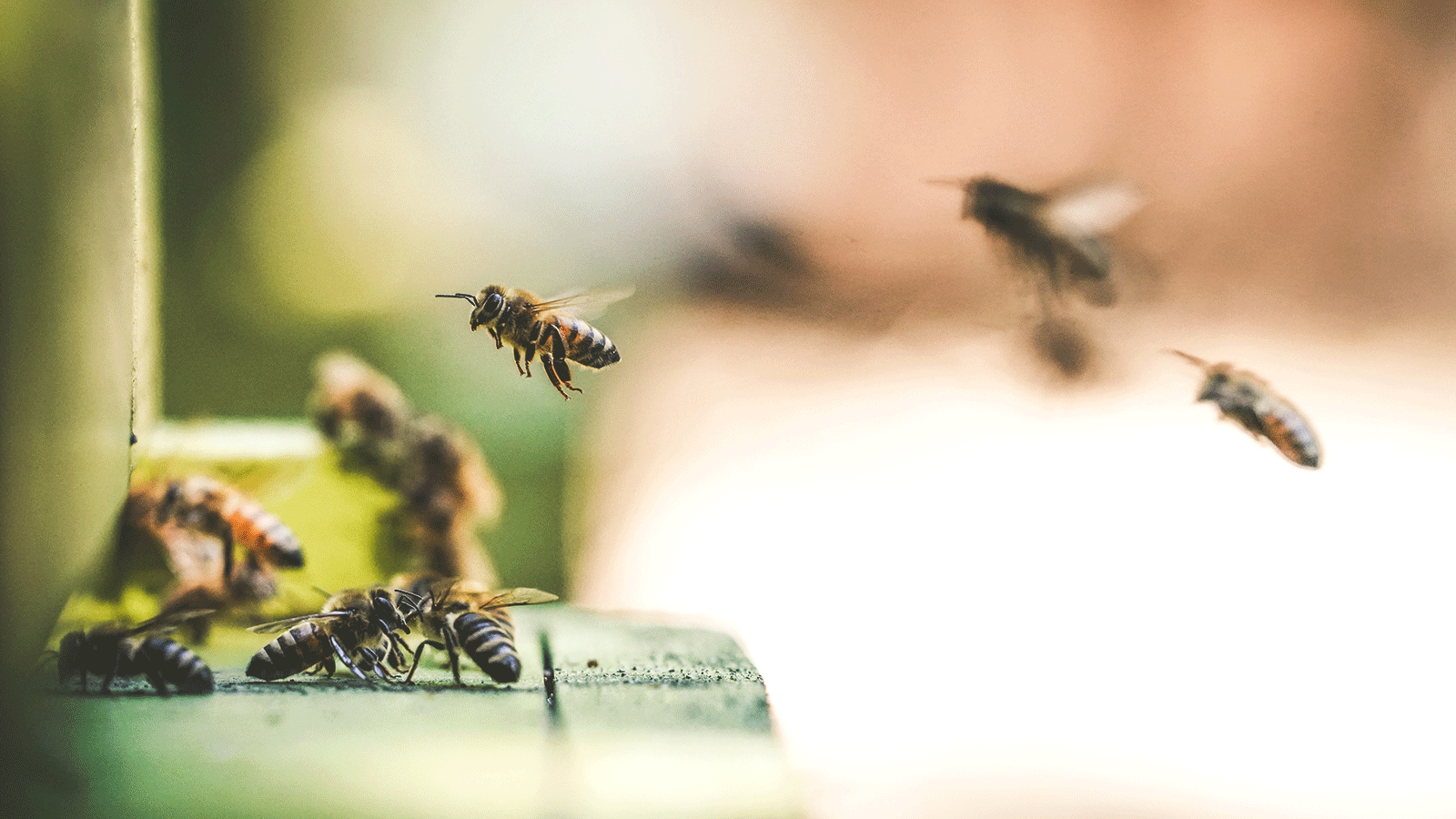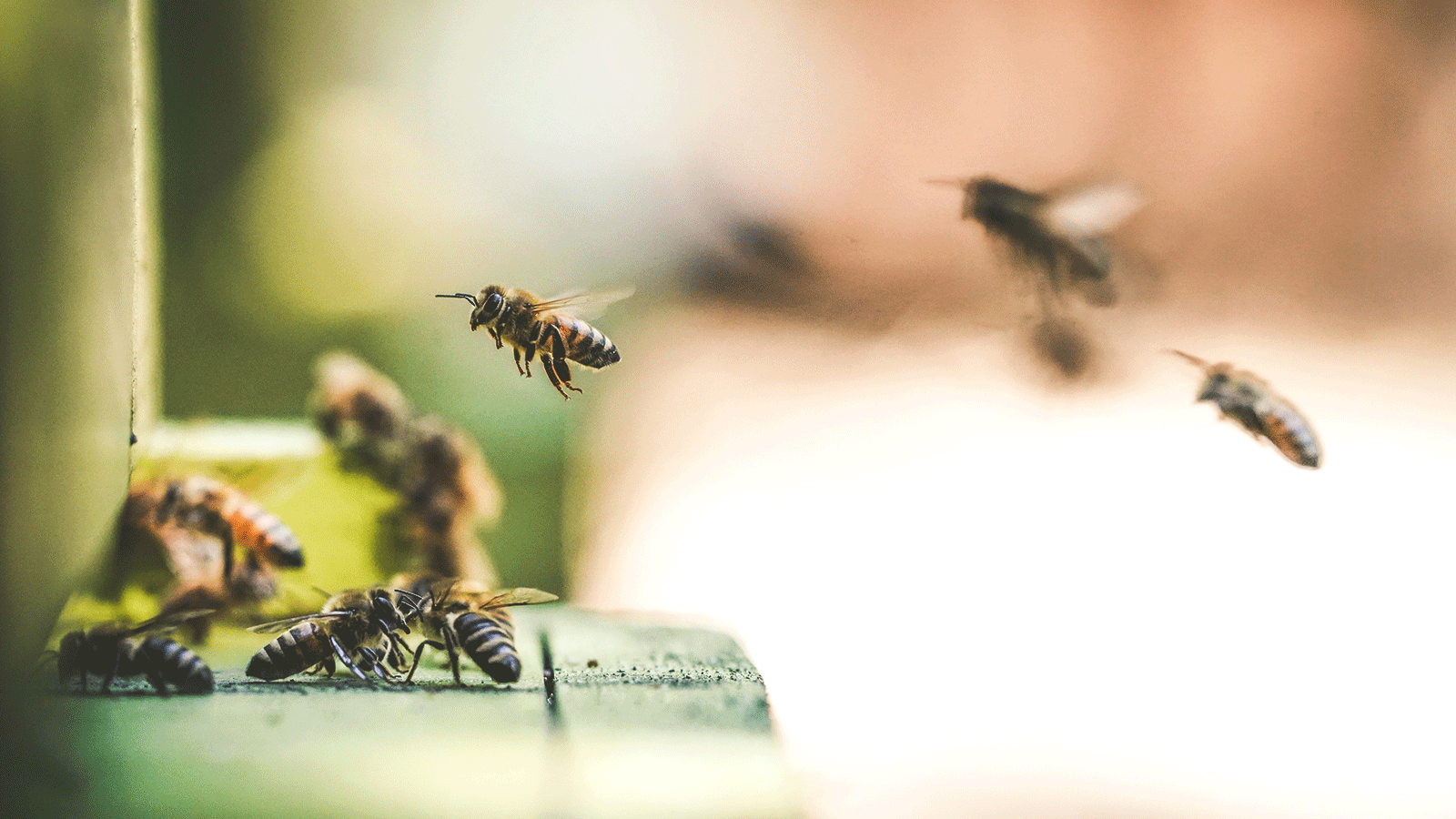
Bees love hemp. At least 23 varieties feed on hemp pollen.
A new study has found that male hemp flowers — the cannabis plant used for fiber and seeds — could prove to be a viable food source at a time when bees are facing many survival challenges. The study, “Bee Diversity and Abundance of Flowers on Industrial Hemp,” appears in the March 2019 issue of the Elsevier-published journal Biomass and Bioenergy. The observations show that the pollen from male hemp flowers is used as nutrition for bee larvae.
One of the study’s co-authors, Arathi Seshadri, an evolutionary biologist and assistant professor at Colorado State University’s (CSU) Department of Soil and Crop Sciences in Fort Collins, said if farmers are growing male hemp plants, they will attract many bees.
“I did not expect to see this huge diversity of bees exploiting this crop,” Seshadri told Weedmaps News. “That was very surprising to me because this is a relatively new crop in the U.S.”
Seshadri warned that farmers should use caution when spraying pesticides on plants, especially when hemp is flowering, as these substances could adversely affect the health of the bee colonies.
What Are the Benefits of Hemp?
Under normal outdoor growing conditions, hemp begins flowering after other flowering crops have completed their blooms, “making it an excellent pollen resource for bees,” according to the study’s authors. This added pollen source is available at a time of the year when flowers and pollen become scarce.
Hemp is used in thousands of products: paper, textiles, clothing, biofuel, animal feed, and biodegradable plastics, to name a few. Industrial hemp, which produces fiber and seeds, comes from the male plant.
Hemp is wind-pollinated and does not require pollinators like bees to produce seeds and new plants. It is also dioecious, meaning the plants are either male or female. Hemp that produces cannabidiol (CBD) oil, which currently comprises about 90 percent of U.S. hemp production, is produced from the female plant. Hemp has not been grown commercially on a large scale in the U.S. for nearly 70 years. The Hemp Farming Act of 2018 was signed by president Donald Trump as part of the 2018 Farm Bill.
The diverse utility of hemp makes it an attractive cropping option for farmers. Click To Tweet
“The diverse utility of hemp makes it an attractive cropping option for farmers,” the authors wrote. “Hemp has great potential as a high-yielding multi-purpose crop … that can be bred for fiber content, and stem and seed yields.”
Bees Love Hemp
The authors noted that the true extent of hemp’s value to the ecosystem is yet to be discovered.
“This copious pollen production in hemp is likely to have an ecological value to beneficial insects in the ecosystem (as a pollen source),” the authors wrote. However, “being a crop that has only recently gained popularity, the ecological value has not been explicitly investigated.”
Whitney Cranshaw, a professor of entomology at CSU’s Department of Bioagricultural Science and Pest Management, said while hemp pollen is collected by bees, it is unlikely that there is any benefit to hemp from bee pollination.
“The benefit is that it is a good pollen source, present in late summer, that can be an important pollen resource for bees when alternative pollen resources are not available,” Cranshaw told Weedmaps News.
Lawrence Smart, professor of horticulture in the School of Integrative Plant Science at Cornell University in Ithaca, New York, said he expects to see hemp used as a field crop in rotation with corn and soybeans. Smart said New York plants a diverse grouping of crops, such as tomatoes, pumpkins, and peppers. There is still much to observe as to how the introduction of hemp to the rotation will alter the surrounding ecosystems.
“It’s important to study pollinator populations to see if hemp will divert bees away from other specialty crops,” Smart said.
Research by Heather Grab and Nathaniel Flicker of Cornell’s Department of Entomology found that hemp supports a large, diverse bee community responsible for pollinating many other crops. They found that “expansion of hemp production may facilitate pollination in nearby crops.”
Bee Colonies Face Challenges
Andony Melathopoulos, a pollinator health extension specialist with Oregon State University in Corvallis, said the colony collapse disorder that plagued bee colonies a decade ago has . The 2006 phenomenon, which saw huge losses of adult bees for several years, still remains a threat.
“Losing colonies has been constant since then and this year could be one of the worst,” Melathopoulos said, noting that other factors impact honey bee health, including parasites and viruses, with Varroa mites actually transferring many viruses.
“The mite is very hard to control and beekeepers are always dealing with them. For decades, beekeepers earned most of their income from honey production,” he said. “But now most of their income is derived from pollination (renting out colonies of beehives to pollinate particular fields and orchards), which exposes bees to more pesticides. That’s taking a toll on them.”
Melathopoulos also said corn and soybeans have displaced many other flowering crops that bees once fed upon. “Honeybees need many different flowers to feed on and increasingly those don’t exist anymore,” he said.
In an August 2018 report, the U.S. Department of Agriculture (USDA) reported that Varroa mites remained the top bee colony stressor for beekeeping operations with five or more colonies in 2017. The number of U.S. honey bee colonies dropped to 2.63 million colonies on Jan. 1, 2018, from 2.99 million on July 1, 2017.
Crop Diversity Helps Biodiversity and Economy
Melathopoulos said hemp provides more than pollen to bees. “Studies show that crop diversity helps overall biodiversity. Having another crop in rotation that is high value can put more money in farmers’ pockets,” he said. “When growers have more options for rotation, that leads to healthier cropping systems and fewer problems. It becomes easier to manage weeds and pests and diseases. Those indirectly benefit bees.”
Cory Sharp, CEO of the hemp farming consulting firm Hemp Logic, said the 2018 Farm Bill legalizing hemp after decades of prohibition greatly affected hemp farming and industry. “The day it passed, my traffic quadrupled,” Sharp told Weedmaps News.
Erica Stark, executive director of the National Hemp Association, agreed that the Farm Bill provided a huge stimulus to her 600-plus members, a valuable new crop for American farmers, and new domestic and foreign markets for U.S. producers.
While Stark predicted growth in fiber and seed production now that hemp is legal, she said the future for CBD products and markets lies in the hands of U.S. Food and Drug Administration (FDA) regulators, which could tamp down rosy predictions. Stark valued the U.S. industrial hemp market about $1 billion in 2018. “But I wouldn’t be surprised if it doubled by the end of 2019,” she said.
In June 2018, San Francisco-based Grand View Research predicted the U.S. industrial hemp market would grow to $10.6 billion by 2025, while last year the Chicago-based Brightfield Group said the hemp-based CBD market alone could grow into a $22 billion industry by 2022.
Eric Skidmore, a beekeeper who has farmed hemp and is conducting privately funded research in San Diego, is feeding his bees CBD-infused oil as well as hemp oil to observe the impact on their immune systems.
“We’re trying to see how beneficial it is to the bees,” Skidmore said.


